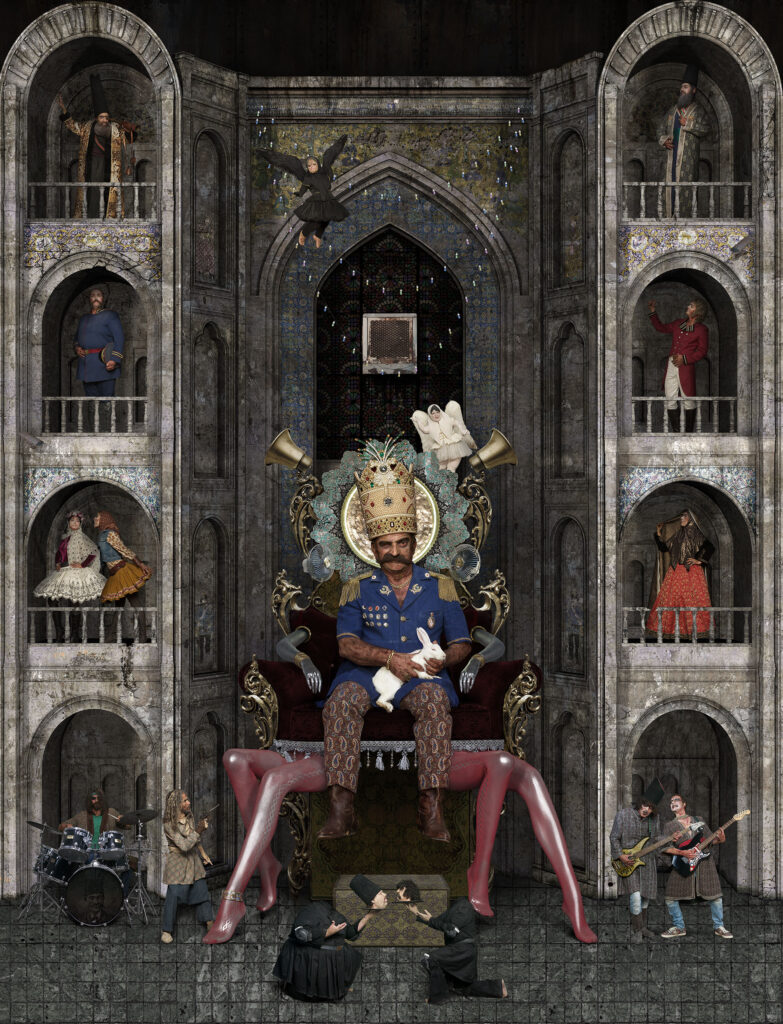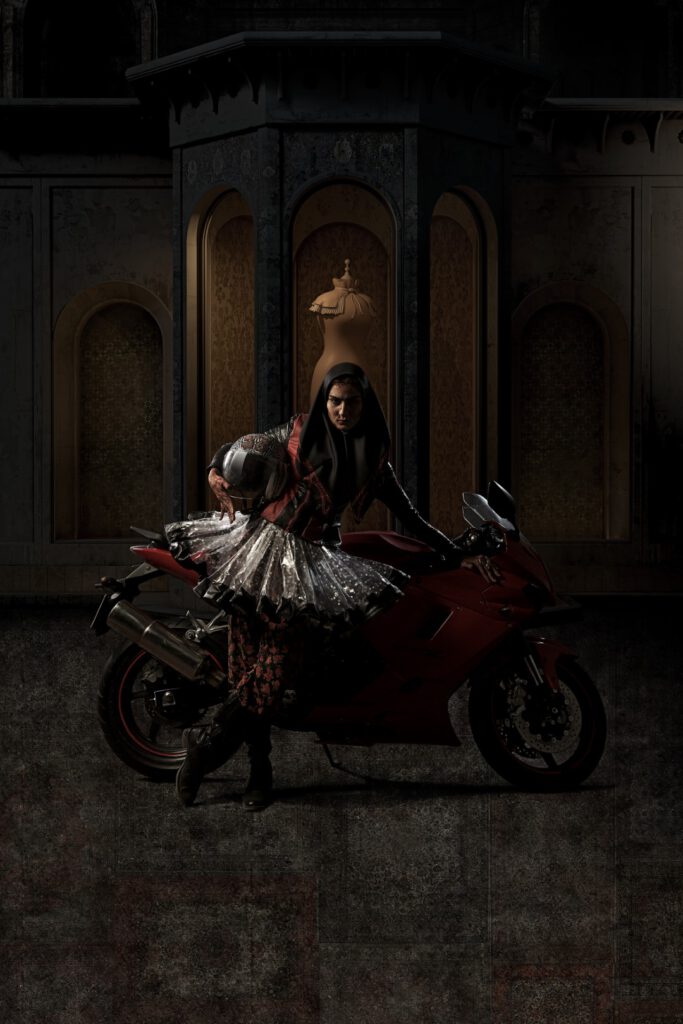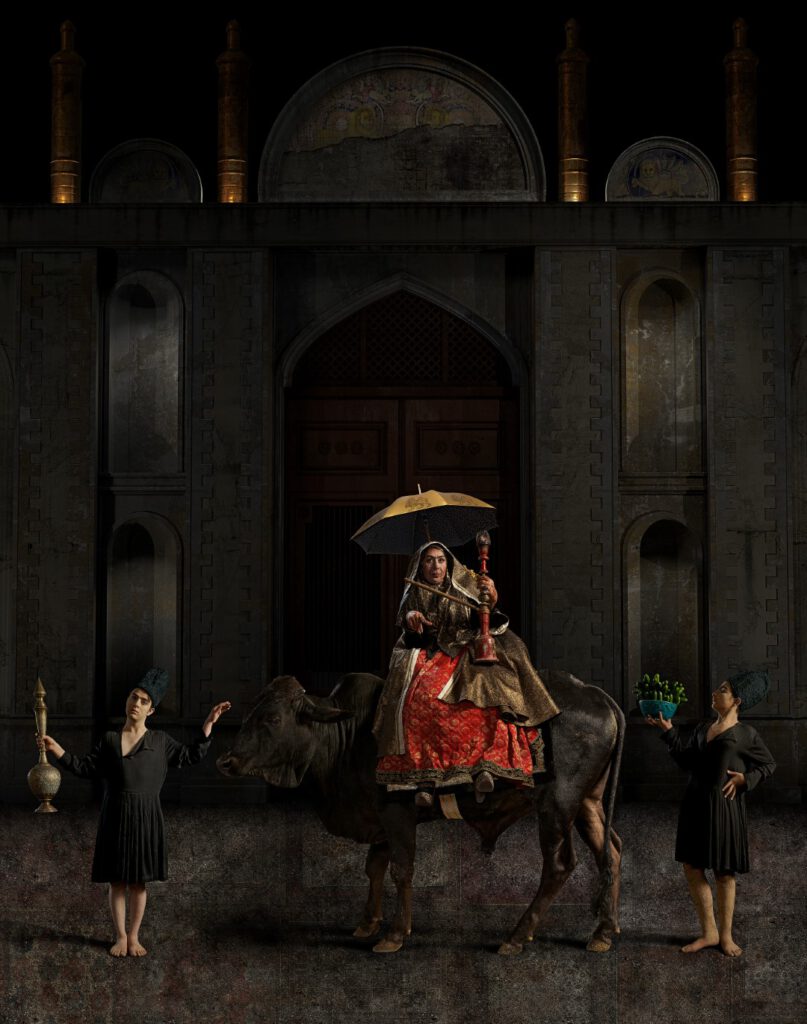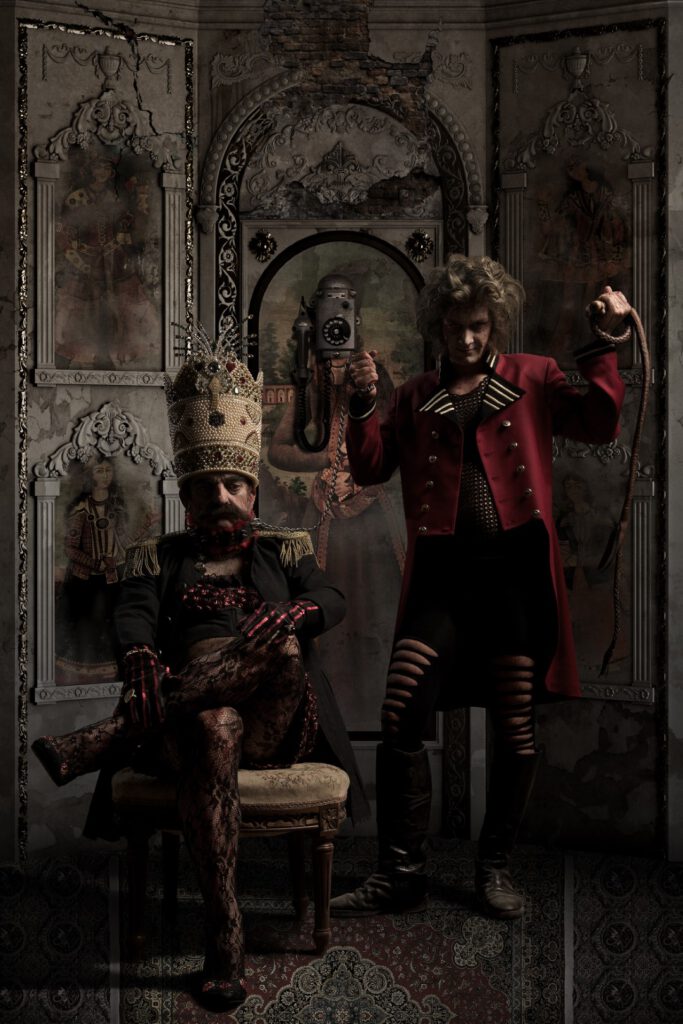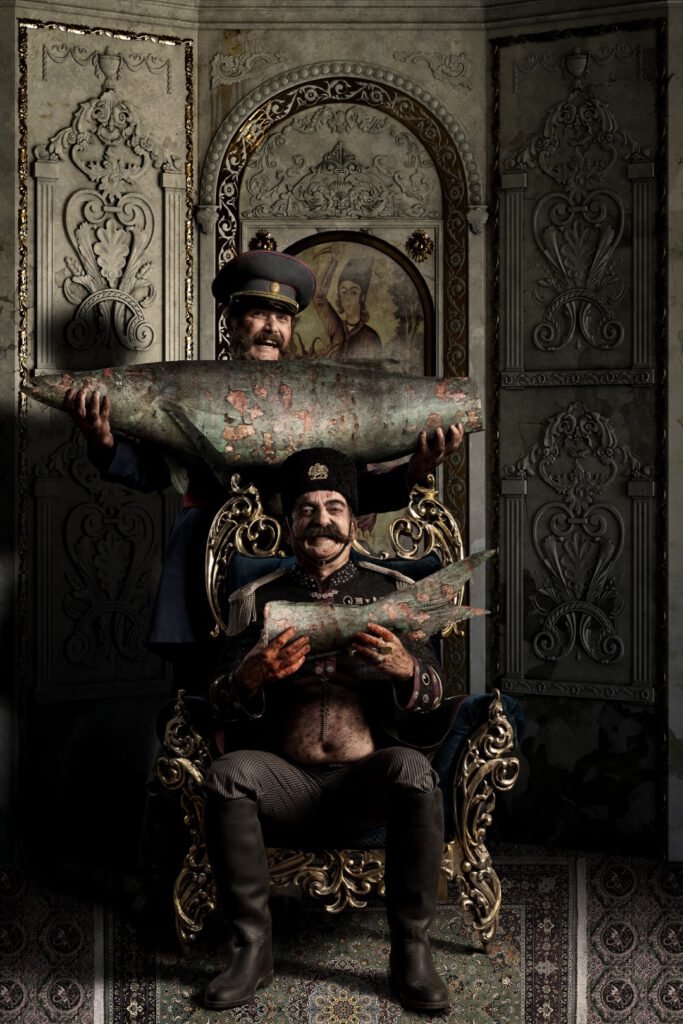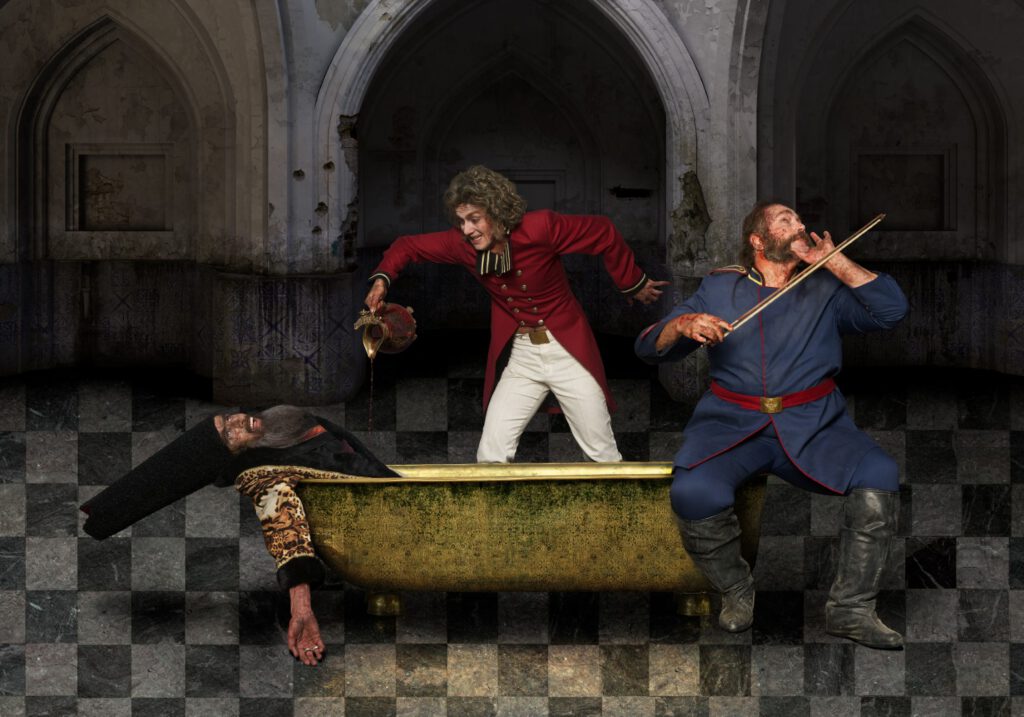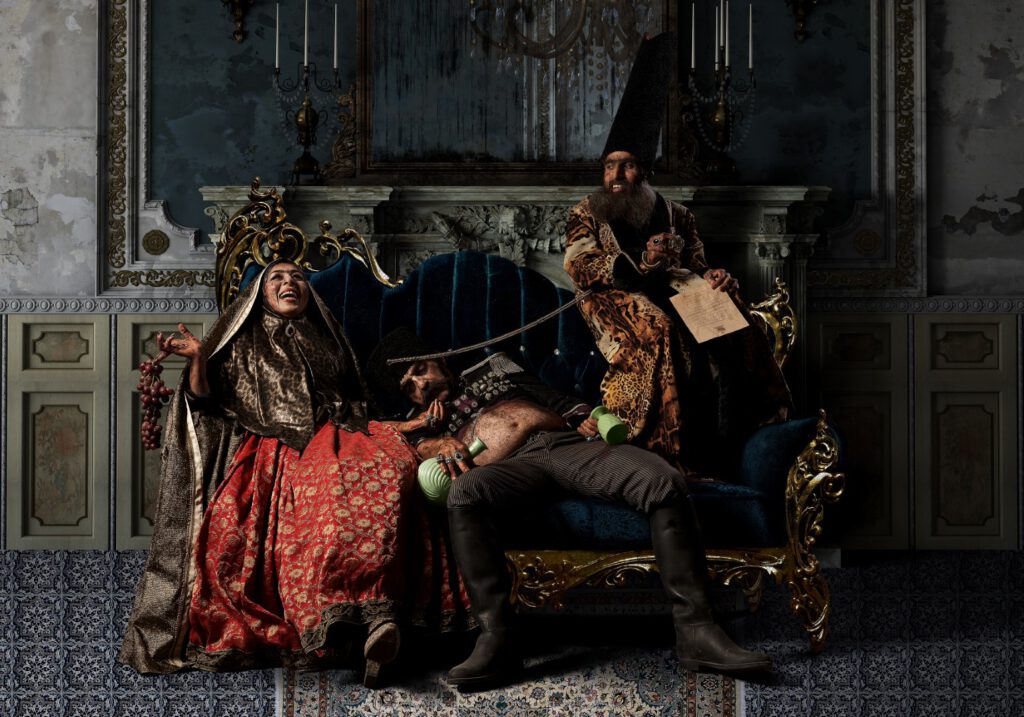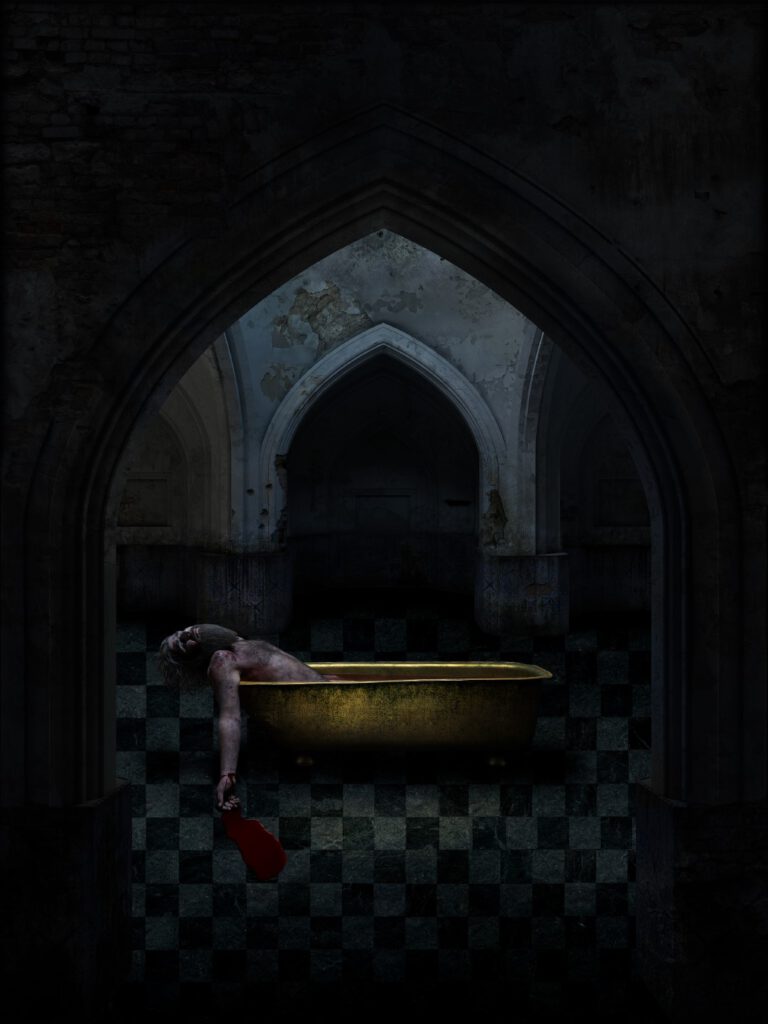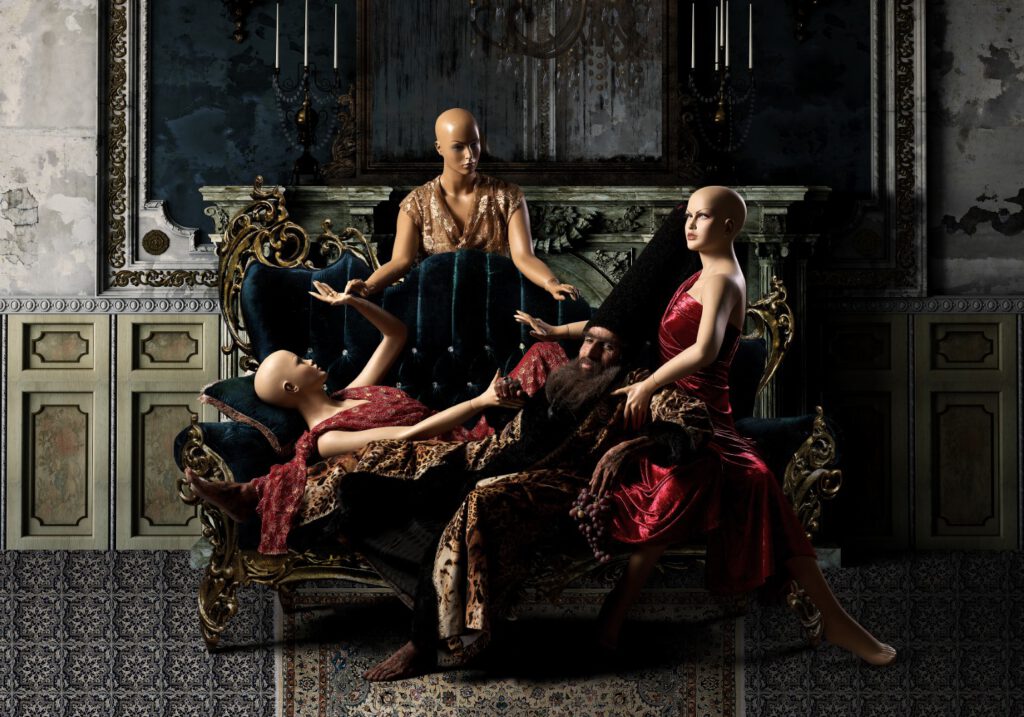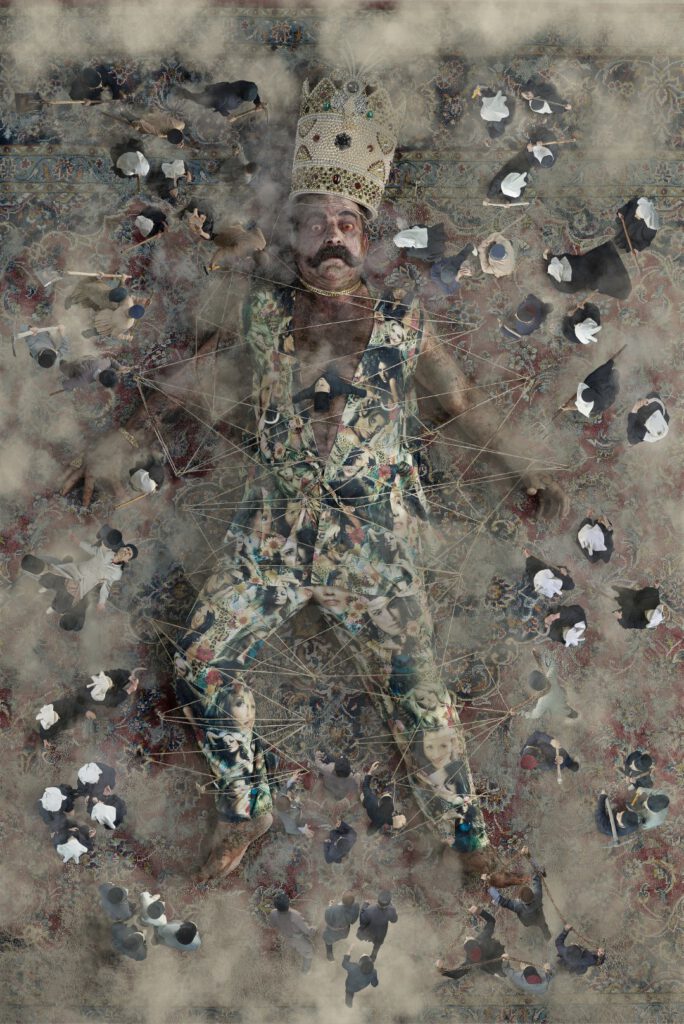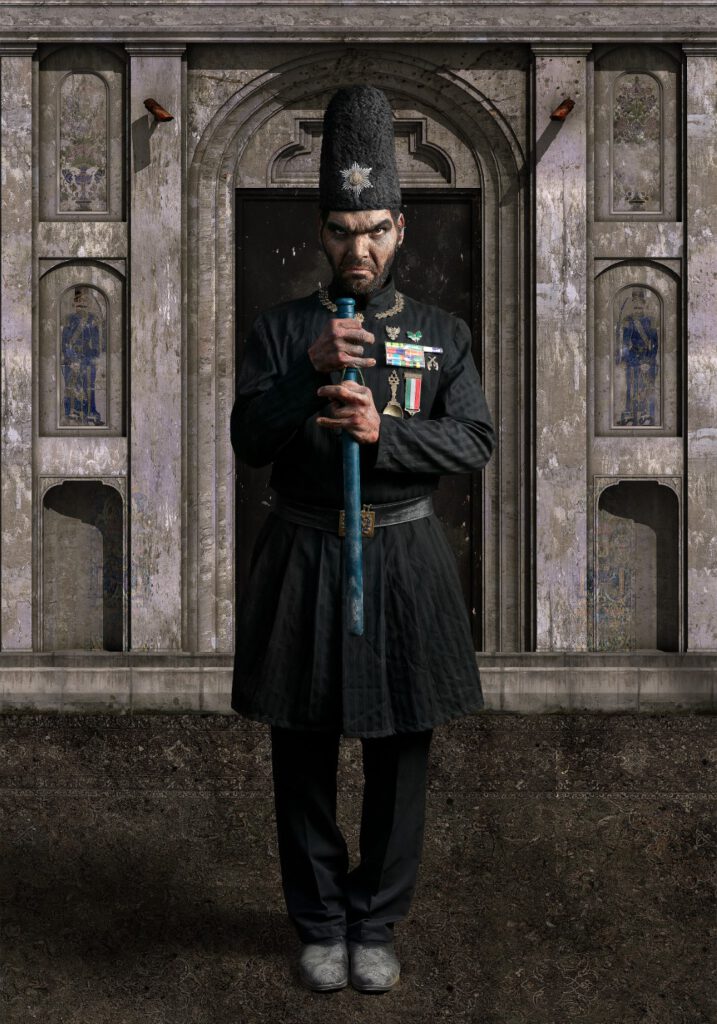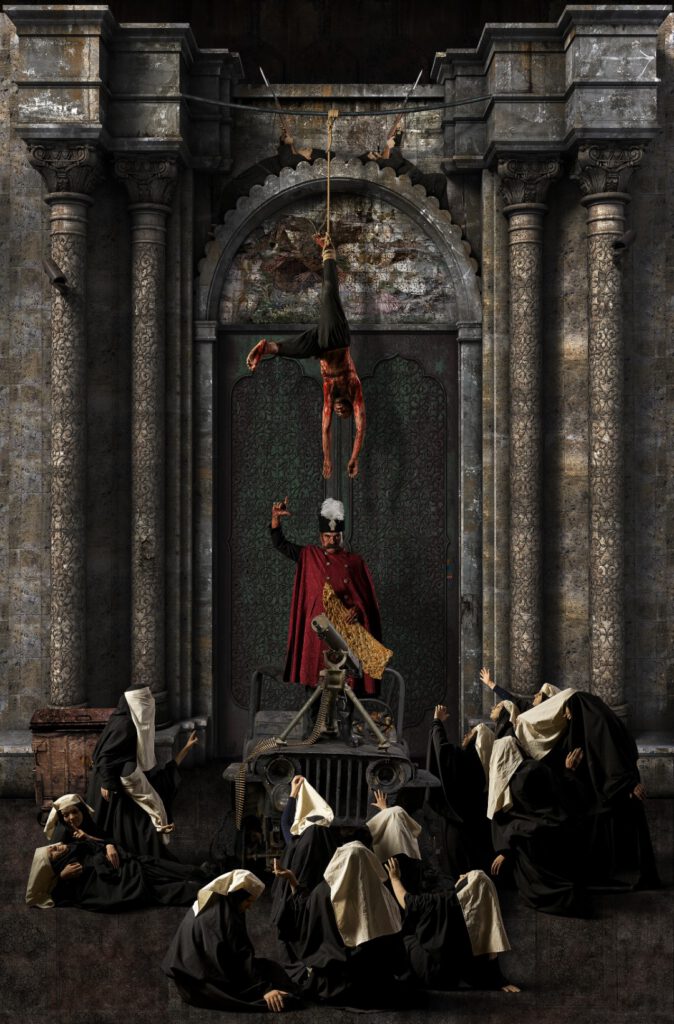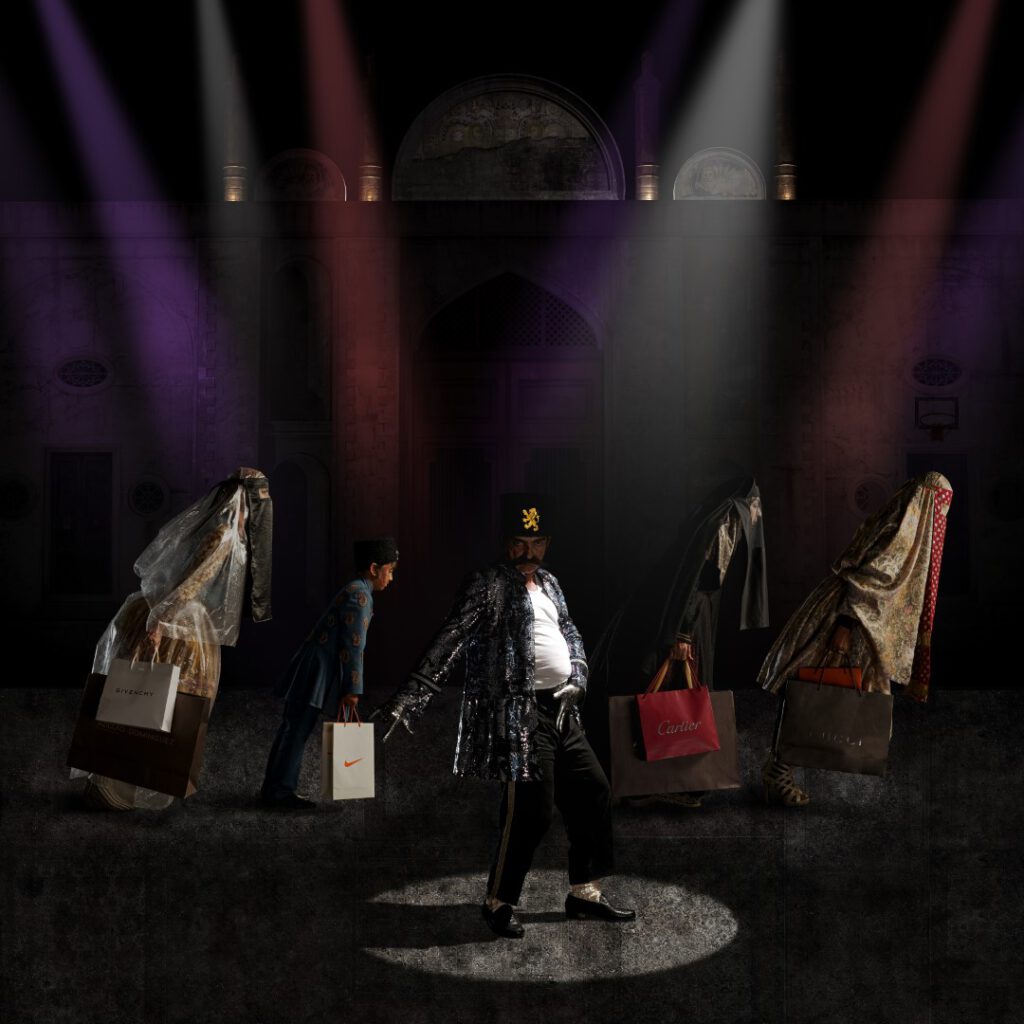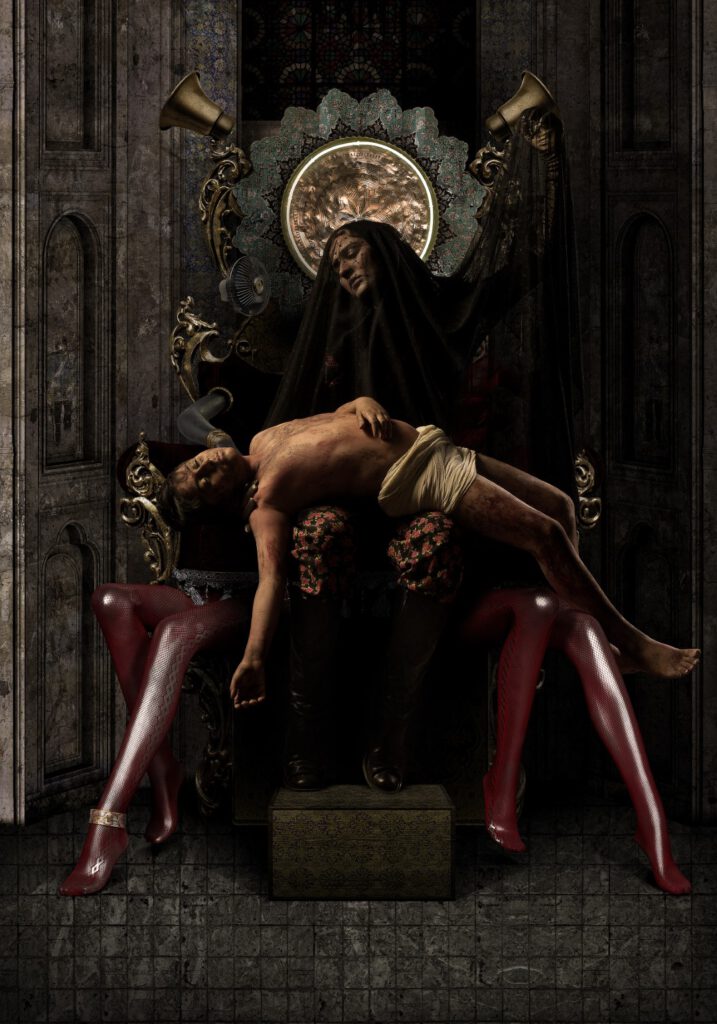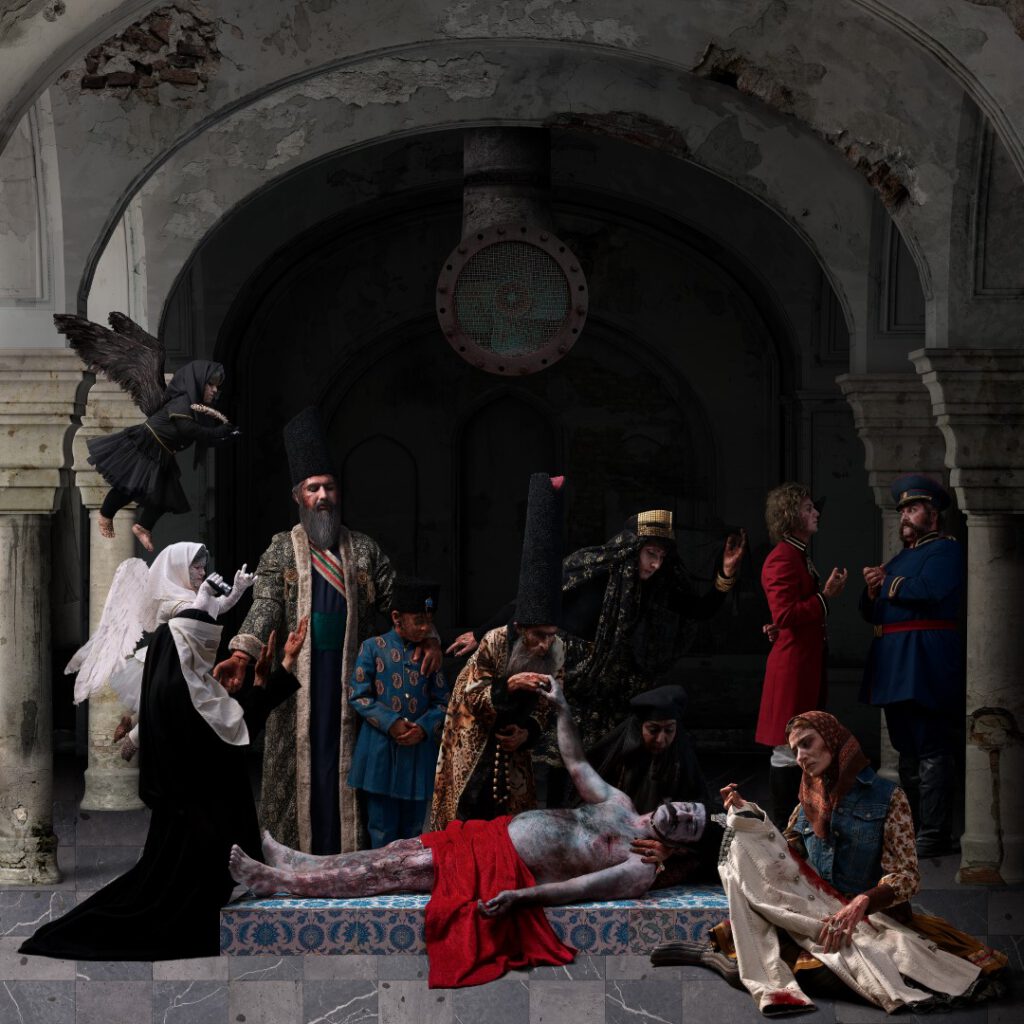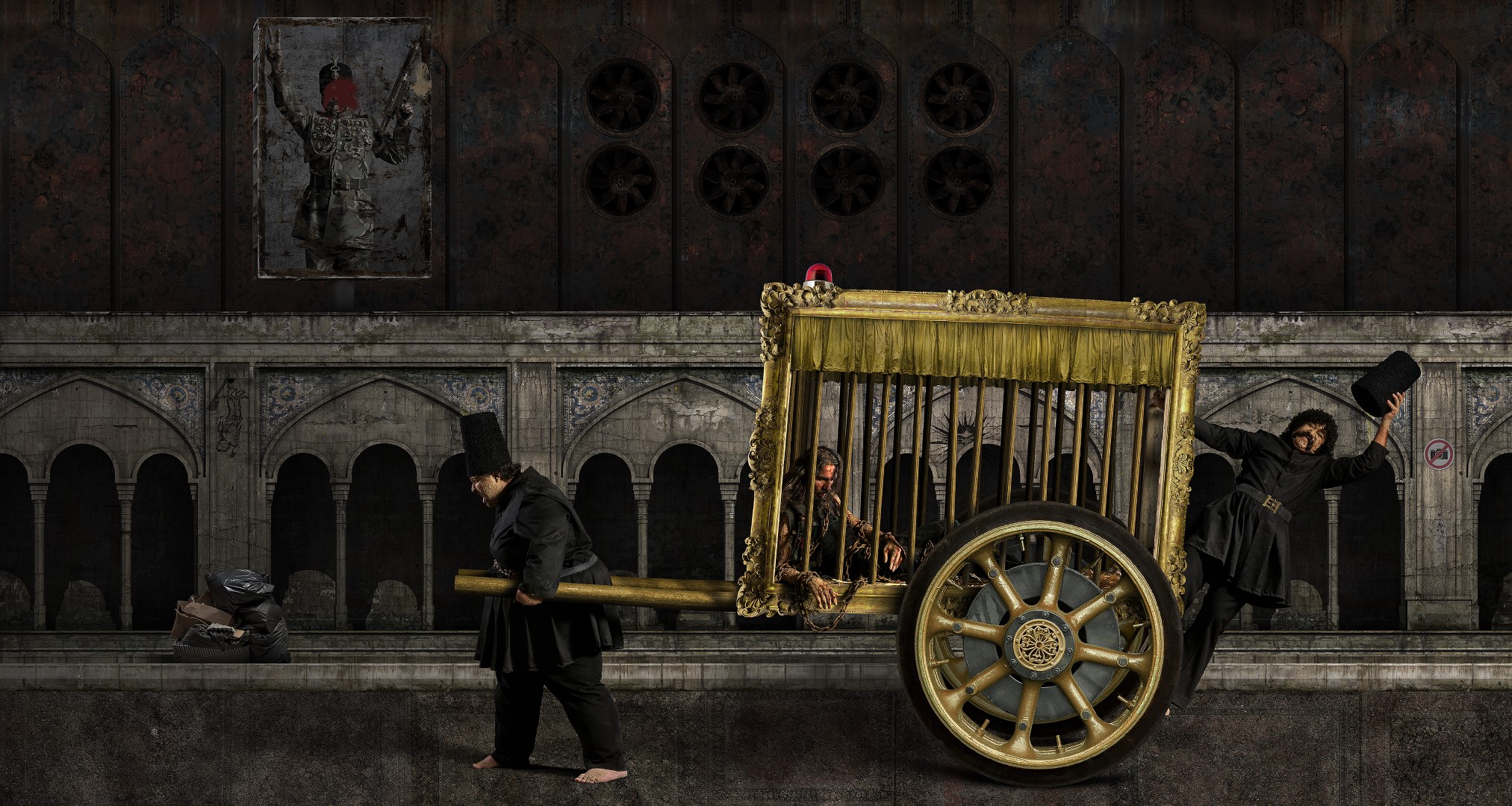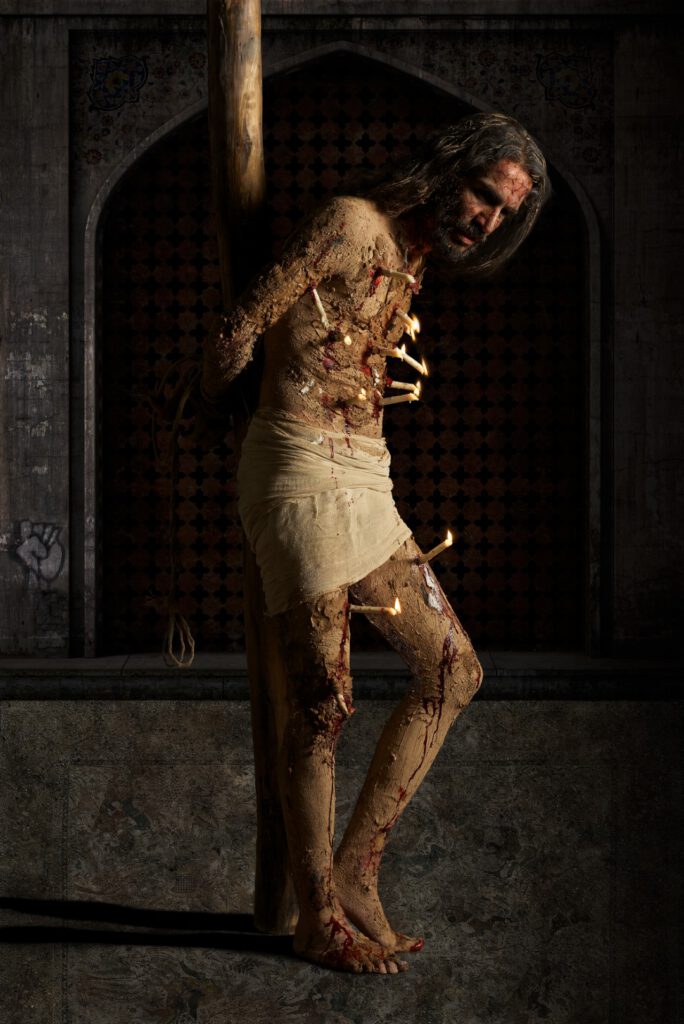I will rule you in a different manner, if I stay alive…
Attributed to Nāser-al-Dīn Shah at the hour of his death
A vast city that slowly breaths in the dark depths of the earth. An ancient city, as old as the history of Human despotism. A high wall embraces the city. A wall that according to orders of The King, is decorated with patterns of love.
The King that every fifty years, at an exact date and hour is assassinated. The funeral ceremony that is held is more elaborate every time with the crumbling Tomb built even larger.
The next day The King rises from his tomb and goes to the palace, and his dominion is repeated with no alteration.
It is said that The King has made a pact with the angel of death, and there are others that believe that the citizens of the city are recalling his name in their hearts and ask God to return him to them.
The History of this city has been written once and for eternity, it has a circular motion , where the beginning is the end. The Name of This City is “Under Ground”.
Shah’s coronation was held amid pomp and ceremony symbolic of the Shah’s to mark the accession of Shah to power. Entering the capital at the most auspicious hour, as foretold by the royal astrologer, he was received by “the princes of the royal family, the notables, the chiefs of departments and nearly the whole population of Tehran.” Seven hours and twenty minutes past sunset in his first public levee, he “sat in state for a short time” on the marble throne in the open veranda of the Golestan hall of audience, “wearing his crown and all the insignias of royalty.
The daughter of a villager Jeyran (Turkish for gazelle; so nicknamed for her charming eyes) was the first of the women of humble origins among Shah’s wives who because of the Shah’s affection managed to wield great influence over the affairs of the court. Brought to the royal harem to be trained as a female musician and singer, she must have first caught the Shah’s attention perhaps just after the Amir Kabir affair. With a style reminiscent of the stories of The Thousand and One Nights, of which the Shah was so fond, the young singer found her way into the Shah’s heart as much with her own charms as with Mahd e Olia’s blessing.
Attractive and outspoken, she was fond of riding and hunting. In the saddle, complete with boots and a man’s outfit and wrapping her facial cover around her forehead, she was a total anomaly next to the grave, often overweight and timid ladies of the harem and in her behavior exhibited a sharp contrast to their mute mannerisms.
I remained here alone and on my own. Looking in all directions, I see neither a friend nor a supporter. Now in the position of queen dowager no one is as defenseless as I am. I thus take refuge with the same King of the Martyrs so that if anybody desires to turn the king against me, drive me away from here, and scandalize the Shah, that person himself will become the victim of the Shah’s wrath. This is the pledge I made in the shrine of Ma’suma for Amir Kabir. Let him not harass me. If at God’s threshold I am blameworthy, still He has done many great works for me. Here, too, He will not let a mother be so severely parted from her son.
Man,” as people say, “is born one day and will die one day.” This verse, too, is very well-known: “Dying with honor is better than living two hundred lives in disgrace. Surely the creator of this world and the founder of the faith will not accede in the humiliation of the Persian state. God knows that from the outset we were not, and still are not, desirous to fight with England. I wished to make them recognize a limit to their mischief and arrogance. But I did not want to behave like a loose woman who gives in as soon as she is asked to remove her underwear. The honor of the founder of the faith certainly would not consent that the government be ruined in vain. I as the king and you as the prime minister and a state’s servant have not behaved contrary to the honor of our faith and our nation or against reason and fortitude. If the Lord of this world approves, this is our ideal. If not, there is no fault upon us. What else can be done?
The Shah’s autograph note informed ‘Ali Khan, the chief of the royal outer servant (farrash-bashi) and Amir Kabir’s old protégé turned enemy, that he had been “designated to go to Fin of Kashan and relieve Amir Kabir.” In accomplishing this mission, promised the royal command, “he shall be honored among his peers” and should be confident of the Shah’s “imperial benevolence.”
Was a man with a personality very different from the late premier’s. He stood for much that Amir Kabir had tried to change and for the same reason appealed to Shah. Though relatively young when he came to power, he represented the old school ofstatesmanshipatitsmostpragmatic.Aconservative-minded and shrewd maneuverer, he was heir to a family of bureaucrats who had long served the dynasty as army accountants and secretaries. His lofty demeanor, long, old-style dyed beard, ornamented robes, lavish lifestyle, and extensive household and entourage were deliberate reminders of the glorious days of the dynasty, when Persian statesmen were less conscious of their disadvantages and prouder of their magnificence.
Thou hast passed thy thirtieth year, and it is time that thou didst learn wisdom, and were thoughtful of the welfare of thy subjects. Know that ruling well is something different from setting up a few puppets, mirrors to be stared at. The state has been ruined by want of good faith in the government, which has brought ill enough on the people. Every man acts now as he pleases owing to thy vacillating counsels. One man is desperate, another rendered confident in his evil deeds, another plots treason, another meditates flight, another is on the look out for an insurrection.
Shah! By God, the time for thy being a man is fast passing, and the misery of the people has already passed all bounds. Take heed of thy ways, relieve the affliction of thy people or hold thy subjects absolved, if they take measures to bring about what high and low desire. Put away thy intoxicating drinks, or we have that in hand which if made known will make thee hide thy face for shame.
By winter public discontent led to serious bread riots, threatening the very stability of the Shah’s rule. On the Shah’s return from hunting he was surrounded by 5,000 to 6,000 women with their veils removed and with mud rubbed on their heads as a sign of misfortune, “yelling for bread.” Responding to the sticks and lashes of the royal guards with pellets and rocks, the women clutched at the Shah’s carriage, and only with great difficulty did the royal cavalcade managed to pull its way through the crowd and slip into the royal citadel. The hungry demonstrators nevertheless gutted the bakers’ shops “under the very eyes of the king,” and the minister of war who accompanied the Shah, was apprehended by the crowd. His reputation as a major speculator with massive sealed granaries was well known to the women, who dragged him out of his saddle and beat him up.
Next day the starving crowds surrounded the royal palace in even greater numbers. Climbing the closed gates, “thousands of women made their way into the citadel and began to assail the guards with large stones while being urged on by their male relatives, who under cover of their attack, were looking out for an opportunity to effect a more serious rise.” In facing a far more dangerous riot than that he had encountered before, the Shah seemed utterly helpless. An emergency meeting of the Council of the State convened in the Shah’s presence could do little but summon the influential mayor of the city, Mahmud Khan Kalantar Nuri. An official with years of service as mayor, he was a public figure known to the entire populace. He could only promise the reproachful Shah that he would soon put down the riot, but when he returned to the crowd the second time in the company of his servants and furiously beat several women with large sticks, it was inevitable that his action would only further incite the crowd. Experiencing some “trepidation” upon the appearance of the tumultuous mob, the Shah immediately summoned the mayor back into his presence. “If you are thus cruel to my subjects before my eyes,” he reportedly said, “what must be your secret misdeeds?” He then ordered the mayor bastinadoed and his beard cut off. But while his orders were being carried out, in a moment of rage the Shah “uttered the terrible word tanab [rope].” The executioners immediately “placed a cord round the unhappy man’s neck and in an instant more their feet were on his chest, trampling out the last sign of life.”
“—and when Mahmud Khan’s naked body was dragged through the streets “amid the execration of the multitude” and hung up by the heels at one of the city gates. To complete the spectacle of ferocity and intimidation, the next day the Shah wore a “suit of red clothing,” an ancient symbol of royal rage and further bloodshed.
Whoever has seen him once could ascertain that such a course of conduct and treatment could not agree with his nature. He is a proud and fierce young man who is ambitious, highly autocratic, combative, and extremely warlike. The English departure [from Iran] was a cause for celebration for him. Since then, his spirits, which for a long time had been depressed because of the intimidation of the foreign powers, have begun to turn to joy and jubilation and his melancholy and subdued mood indoors has changed into pride and self-esteem.
Only two weeks after his reaffirmation, Amir Qasim Khan, the six-year-old heir apparent, died of what was diagnosed as “brain fever” an illness most likely to have been meningitis. the Shah was helpless, “hitting his forehead against the wall,” and would not eat for days. The sense of loss was profound, leaving a permanent mark on the Shah’s sentiments and on his ability to forge emotional attachments for decades to come.
Body of Shah was naked now, like a bouquet of flower that Autumn had not stroked, his body was young untouched by age, the Shah was in a pleasant dream, and his features were moon like. They asked for the Shroud (Kafan). The Shroud that the Shah had brought back with him from the holy shrine was nowhere to be found.
After an hour that Shah had remained naked, one of the courtiers brought his own shroud and so finally Shah’s body could be removed. Once ablution was completed, they could not find the ceremonial Shawl to cover his body, as all courtiers were busy with their own affairs. Finally prime minister told the grooms to remove stitches from an already sewn piece of shawl and to cover the body.
Diaires of Amin ol dolleh
Abou Torab Khan, the commissioner of police who was in charge of interrogation, in his official report, writes: “ Only God knows, thus far these are answers of Mirza under normal interrogation, once he is put through torture and enough damage is caused, he will be more forthcoming”.
Mirza Reza’s answers:I have seen a bit of the world. Go and see what others have done and do the same. It’s not even necessary to write new laws. Writing laws now in Iran is akin to feeding the infant with bread and kebab, it will only be suffocating. But consult the people, for example talk to the chief of a village and ask him what kind of taxes they will be content with, and what kind of treatment they will prefer? Whatever he says treat people in that manner. In this way the affairs of regime will be organized and tyranny will be obliterated.A Shah that has ruled for fifty years and is still receiving wrong information and he does not investigate, and after all these years the fruit of this tree is the thugs and brutes of court who are menace to society, this kind of trees should be cut down to avoid these fruits. The fish rots from its head not from the tail. Tyranny is dictated from above.
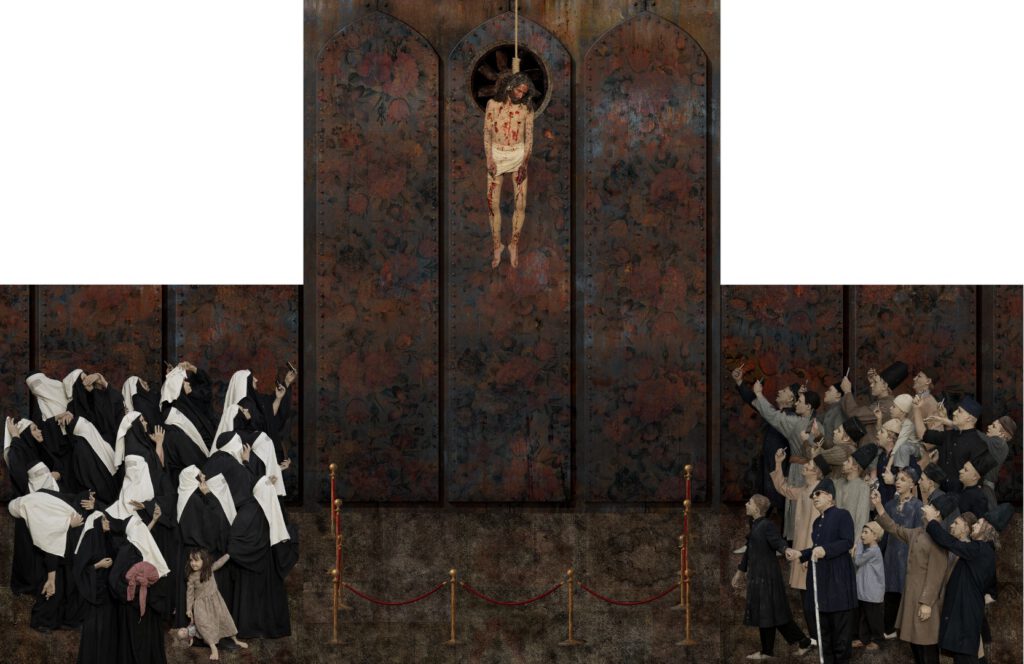
128 x 102 cm / 222 x 138 cm / 128 x 102 cm
Archival pigmented inkjet print done at Tehran Image Works
Colonel Kasakofski writes that: Mirza was in handcuffed. He wanted to appear cool and brave, but once he saw the hanging poll he lost his nerves. But he still had the strength to say that he is not Bahaie and is a devout Muslim. He started saying prayers. And said “ Keep this Poll as a souvenir, I will not be the last one”.
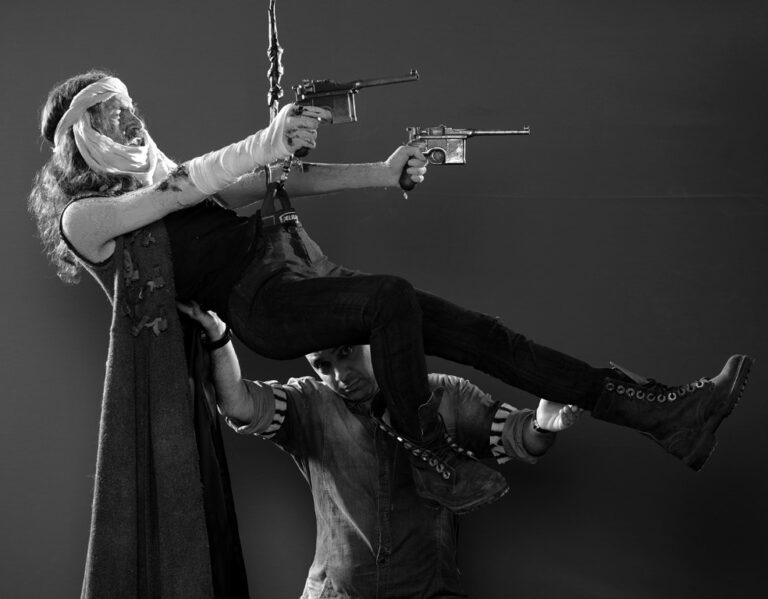
Underground (Backstage)
A vast city that slowly breaths in the dark depths of the earth. An ancient city, as old as the history of Human despotism. A high wall embraces the city. A wall that according to orders of The King, is decorated with patterns of love.
